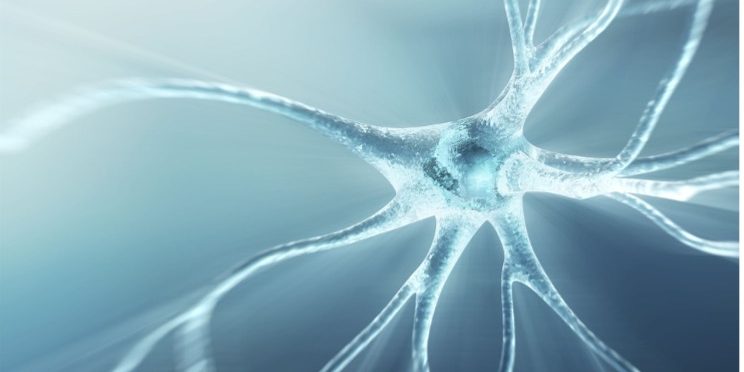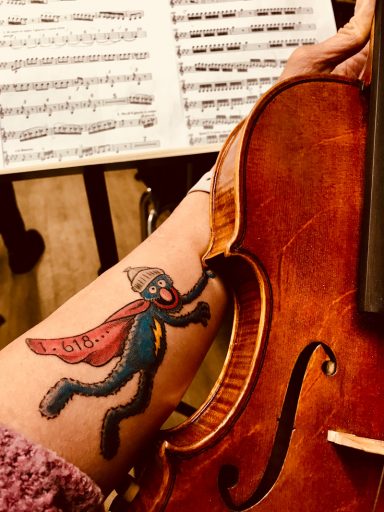
Visceral Massage and the Language of Pain
- Inflammation causes ectopic nociceptor sensitivity: Inflammation induces abnormal mechanical sensitivity in nociceptor axons, leading to pain when nerves are pressed or compressed. This involves disrupted axonal transport and altered channel function, though the exact mechanotransduction channels remain unidentified.
- Differences between somatic and visceral pain: Somatic pain is sharp and reproducible by mechanical loading, while visceral pain is primarily inflammatory and chemical, driven by factors like distention and ischemia. Both types involve peripheral and central sensitization but differ in nociceptor activation and primary mechanisms.
- Manual therapy influences healing and inflammation: Mechanical stimulation through manual therapy modulates healing by affecting transforming growth factors, promoting either scarring or regeneration. It can elicit both pro- and anti-inflammatory responses, though optimal dosing and mechanisms require further research. Visceral mobilization reduces postoperative adhesions and inflammation, improving healing and preventing nociceptor hyperactivity.
Clinical Implications of Nociceptor Injury and Pain Diagnosis
Nociceptors respond to chemical, thermal, and mechanical stimuli, with injury causing hypersensitivity or neuroma formation. Differentiating nociceptive, ectopic nociceptive, and neuropathic pain is critical, as misdiagnosis complicates treatment. Manual therapy must consider inflammatory, ischemic, and mechanical factors to effectively address peripheral neural inflammation contributing to pain.
Ectopic Inflammation: In the wrong place. Mechanical sensitivity in a nociceptor axon can cause pain. Activating nociceptors is not what we want. If you press on an inflamed nerve and it causes pain in the enervated tissue, it is being activated. Inflammation is space occupying and will cause reduced axoplasmic transport of the channels that transduce mechanical energy into electrical signals.
Massage therapists’ main challenge is not treatment itself but enhancing diagnostic skills and determining proper dosage. Nerves should not be tender or cause radiating symptoms unless they are compressed or constricted. This leads to ischemia. We are palpating the peripheral nervous system, and a deeper understanding of structures that can compress neural tissue serves our patients.
We do NOT know what the channels are in nociceptors that transduce mechanical to electrical energy. A bit of a holy grail in the pain field right now. We understand heat and cold sensitivity, we know that bradykinin is an irritant and understand the channels.
Introduction to Pain Science and Manual Therapy
Pain understanding and treatment require integrating pain science, differentiating visceral from somatic pain, and applying evidence-informed manual therapy. Visceral dysfunction contributes significantly to pain, necessitating clinical reasoning for better outcomes.
Characteristics and Mechanisms of Somatic and Visceral Pain: Somatic pain is sharp, aching, or throbbing, linked to mechanical loading and reproducible by palpation, while visceral pain is primarily inflammatory and chemical, driven by inflammation, distention, and ischemia. Both involve peripheral and central sensitization but differ in nociceptor activation and primary drivers.
Mechanical Stimulation and Manual Therapy Effects on Healing and Inflammation: Mechanical stimulation influences healing by modulating Transforming Growth Factors: TGF-β1 promotes scarring, enhanced by mechanical forces, while TGF-β3 fosters regeneration. Manual therapy induces both pro- and anti-inflammatory responses, but optimal dosages and mechanisms remain unclear, requiring further research.
Research Evidence on Manual Therapy and Visceral Mobilization: Studies demonstrate that visceral mobilization and massage therapy reduce postoperative adhesions and inflammation in animal models, preventing nociceptor activity, sensorimotor dysfunction, and neural fibrosis. Manual therapy attenuates scar tissue formation and promotes faster peritoneal healing. At the end of the presentation, all papers are included with their DOI for reading.
Pathophysiology and Clinical Implications of Postoperative Adhesions
Postoperative adhesions form in 95% of abdominal/pelvic surgeries, causing pain, obstruction, and infertility. Only 5% of these adhesions lead to painful growth of nociceptors or vascularization of the tissue inappropriately. Adhesions result from tissue hypoxia, ischemia, oxidative stress, and suppressed fibrinolysis. Diagnosis is challenging, and surgery paradoxically causes adhesions, highlighting the need for non-operative treatments.
Nociceptor Function, Injury Response, and Ectopic Nociceptive Pain: Nociceptors are pseudounipolar cells responding to chemical, thermal, and mechanical stimuli. Injured axons regrow hypersensitivity but may form neuromas if unsuccessful. Ectopic nociceptive pain arises from nerve inflammation and focal compression, causing pain perceived in nerve distribution rather than injury site.
Neuropathic Pain Diagnosis and Pain Type Summary
Nociceptive pain arises from epineurium inflammation; ectopic nociceptive pain from axonal inflammation; neuropathic pain from axonal damage. Misdiagnosis between neuropathic pain and radiculopathy is common, complicating treatment. Accurate differentiation is essential for effective management and treatment of pain by a manual therapist.
Clinical Reasoning and Anatomical Considerations in Pain Management: Pain reflects neuroanatomical and physiological processes; careful history and palpation can identify relevant structures. Considering inflammatory, ischemic, or mechanical mechanisms enables precise treatment, better patient communication, and reduced trial-and-error. Understanding a critical point that MT can be both pro and anti-inflammatory, and dose is critical to treating peripheral neural ectopic inflammation contributing to pain mechanisms. Interfaces between tissues are critical in pathology and in prescribing the correct manual therapy.
Here are some practical steps for clinicians to effectively manage visceral pain:
By following these steps, clinicians can better manage visceral pain, promote healing, and improve patient outcomes.
- Enhance Diagnostic Skills: Focus on improving diagnostic accuracy by differentiating between nociceptive, ectopic nociceptive, and neuropathic pain. Misdiagnosis can complicate treatment, so it’s crucial to identify the correct type of pain.
- Understand Anatomical Structures: Develop a deeper understanding of the anatomical structures that can compress neural tissue. This knowledge is essential for effective palpation and identifying the source of pain.
- Apply Manual Therapy Thoughtfully: Use manual therapy to modulate healing and inflammation. Mechanical stimulation can influence healing by affecting transforming growth factors, promoting either scarring or regeneration.
- Consider Inflammatory, Ischemic, and Mechanical Factors: When treating pain, consider the various factors that contribute to it, such as inflammation, ischemia, and mechanical compression. This comprehensive approach can help address the underlying causes of pain.
- Optimal Dosing and Techniques: Research and apply the optimal dosing and techniques for manual therapy. The right amount of mechanical stimulation can elicit both pro- and anti-inflammatory responses, which are crucial for effective treatment.
- Visceral Mobilization: Incorporate visceral mobilization techniques to reduce postoperative adhesions and inflammation. This can improve healing and prevent nociceptor growth into pathological structures such as neuroma, adhesions, fibrosis and interfaces. Knowing the mechanism of injury, the date of injury, chronic or acute is important for understanding and affecting the formation and persistence of mechanisms of pain.
| Step | Details |
| History | surgery, impact, condition, chronic, acute |
| Palpation | fibrosis, thickening, decreased movement |
| Hypothesis | neuroma, adhesion, scar, ischemia, compression |
| Treatment | increase or decrease inflammation and cell profusion |
| Feedback | Reduce pain? Increase pain? Lasting? Temporary? |
Key Evidence & References
1.Manual Therapy Research Methods in Animal Models, Focusing on Soft Tissues
Bove, G. M., Chapelle, S. L., Barrigar, M. J. S., & Barbe, M. F. (2022). Frontiers in Integrative Neuroscience, 15, Article 802378. https://doi.org/10.3389/fnint.2021.802378
2.Manual therapy prevents onset of nociceptor activity, sensorimotor dysfunction, and neural fibrosis induced by a volitional repetitive task
Bove, G. M., Delany, S. P., Hobson, L., Cruz, G. E., Harris, M. Y., Amin, M., Chapelle, S. L., & Barbe, M. F. (2019). Pain, 160(3), 632–644. https://doi.org/10.1097/j.pain.0000000000001443
3.Attenuation of postoperative adhesions using a modeled manual therapy
Bove, G. M., Chapelle, S. L., Hanlon, K. E., Diamond, M. P., & Mokler, D. J. (2017). PLOS ONE, 12(6), e0178407. https://doi.org/10.1371/journal.pone.0178407
4.A novel method for evaluating postoperative adhesions in rats
Bove, G. M., Chapelle, S. L., Boyle, E., & Hartvigsen, J. (2016). Journal of Investigative Surgery, 29(2), 88–94. https://doi.org/10.1080/08941939.2016.1229367
5.Intraperitoneal postoperative adhesions in rats are worsened by opiate administration
Bove, G. M., Chapelle, S. L., & Mokler, D. J. (2016). The FASEB Journal, 30(S1), 694.3. https://doi.org/10.1096/fasebj.30.1_supplement.694.3
6.Visceral massage reduces postoperative ileus in a rat model
Chapelle, S. L., & Bove, G. M. (2013). Journal of Bodywork & Movement Therapies, 17(1), 83–88. https://doi.org/10.1016/j.jbmt.2012.05.004
7.Visceral mobilization can lyse and prevent peritoneal adhesions in a rat model
Bove, G. M., & Chapelle, S. L. (2012). Journal of Bodywork & Movement Therapies, 16(1), 76–82. https://doi.org/10.1016/j.jbmt.2011.02.004
Other articles you may like...
Palpating Fibrosis and Easing Inflammation with Geoffrey Bove and Holly McMillan
Dr. Bove and I have been working on fibrosis and pain mechanisms for decades. His new work with Holly looks at post-radiation fibrosis, which ironically is what led us to working together. This podcast with Whitney Lowe is a fantastic listen for therapists trying to describe what they do with their hands. Check out their…
A WORKOUT FOR MUSICIANS IN PAIN
As a therapist working with musicians for over 30 years—and a musician myself—I created a workout plan for a patient struggling with playing-related pain. It quickly became clear: this routine could help many more. Focused on neural tension, compression, and overuse injuries like tendonitis, the exercises are designed to support the unique physical demands of…
Introducing Gender-Affirming Post-Surgical Massage: A Safe, Supportive Path to Healing
Finding an understanding and experienced practitioner can be difficult. I understand that gender-affirming surgery is a deeply personal and transformative journey. However, the recovery process can present physical challenges such as pain, swelling, scar tissue formation, and changes in mobility. As a massage therapist specializing in post-surgical care, I offer gender-affirming post-surgical massage to support…
Hitting the Right Notes: How Manual Therapy Can Keep Musicians in Tune.
As a musician, your body is as much of an instrument as your guitar, violin, or piano. The hours spent perfecting your craft are invaluable, but they also come with a price—aches, pains, and in some cases, injuries that can make you feel more like a creaky old door than a star. Fear not, because…
Breast Health and Post-Mastectomy Care: The Role of Massage Therapy in Healing and Recovery
Breast health is a crucial aspect of overall well-being, particularly for those undergoing or recovering from breast cancer treatments such as mastectomy and radiotherapy. These medical interventions, while lifesaving, often result in physical and emotional challenges, including scar tissue formation, restricted movement, pain, and lymphedema. Integrative approaches, including massage therapy, can play a vital role…
Board Member BCICA
Read More



